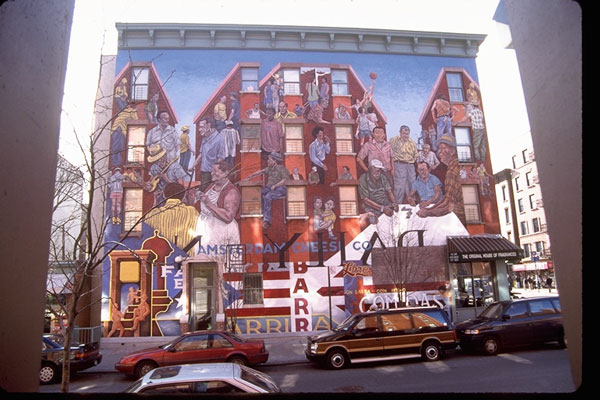
Manny Vega Shares the Cultural Stories of El Barrio Through Art

# Celebrating Manny Vega: The Intersectionality of Art, Culture, and Community in **El Barrio**, New York
New York City is a dynamic canvas on which the stories of its people come to life. In **East Harlem’s El Barrio**—Spanish for “the neighborhood”—the vibrant mosaics that adorn building facades and subway stations offer a vivid expression of culture, identity, and resilience. One of the primary artists responsible for these distinctive public artworks is **Manny Vega**, whose mosaics, murals, and paintings capture the spirit of Puerto Rican and Latinx communities while honoring their history and traditions.
In the Museum of the City of New York’s (MCNY) centennial exhibition titled **”Byzantine Bembé,”** Vega takes viewers on a journey through the essence of **El Barrio**, revealing how his art serves as a visual representation of both the personal and collective histories of the neighborhood.
## The Artist: Manny Vega
Manny Vega is more than a visual artist—he’s a storyteller who draws upon his Afro-Latinx Puerto Rican roots. His works conflate influences from African and Caribbean spiritual traditions, jazz music, social justice movements, and family history. Creating mosaics as a way to celebrate and preserve cultural heritage, Vega has built a bridge between the past and present by spotlighting key figures in the Puerto Rican and wider Latinx community, all within the backdrop of New York City.
Now a central figure in MCNY’s centennial exhibition, Vega’s art draws on his own experiences growing up in El Barrio. His **“Byzantine hip-hop”** aesthetic, a term coined to describe his intricate combination of classical techniques with street art influences, captures the complexity and dynamism of local life.
## The Influence of African Spirituality and Family in Vega’s Work
Hanging above the entrance to the **Byzantine Bembé** exhibition is a beaded **Gelede mask**—traditionally worn by male **Yoruba dancers** to honor maternal figures. The themes in the exhibition, particularly that of honoring strong feminine figures, have roots in pan-African spirituality—an element that runs deeply through Vega’s work. His depictions often feature key women from his life, including his mother and sister, referring to them as instances of “the feminine divine.”
Influences of **Yoruba** spiritual traditions and **Candomblé**—an Afro-Brazilian religion founded by enslaved Africans in Brazil—are also evident in many of his works. These are powerful reminders of the cultural syncretism that links Puerto Rican identity with the African diaspora, showcasing how marginalized traditions continue to survive and thrive in modern-day New York.
## Celebrating Community Figures Through Art
In many of the mosaics displayed throughout El Barrio, Vega pays homage to individuals who have had a profound impact on the Latinx experience in New York and beyond. Among them is a mural featuring **Tito Puente**, the “King of Latin Jazz,” whose talent and cultural impact reverberated well beyond the borders of Puerto Rican communities. The colorful mosaic of Puente, dating back to **2009**, is included in the current exhibition at MCNY. With music serving as a cornerstone of the Latinx experience, it is fitting that Puente’s image graces a series of artworks designed to reflect joy, rhythm, and cultural pride.
In addition to musical figures, Vega’s art also highlights social justice warriors like **Dr. Antonia Pantoja**, an educator and activist who was instrumental in founding organizations that advanced the rights of Puerto Rican communities. These visual depictions invite passersby to reflect on the resilience of their own communities, particularly in an era defined by gentrification and displacement.
## Social Justice: Vega’s Art as Activism
Vega’s work is as much about art as it is about activism, continuously inviting discussions on critical social issues. One poignant etching, **“San Lázaro en El Barrio”** (2019), fuses religious iconography with the cityscape of New York. It depicts Saint Lazarus rising from the dead in front of buildings on 110th St. and Fifth Avenue, reflecting Candomblé’s connection to Afro-Caribbean and Latinx cultures. Yet, Vega goes further, using his art to address systemic issues such as incarceration and racial injustice.
Inspired by the history and legacy of the **Young Lords**, a Puerto Rican nationalist organization similar to the Black Panthers, Vega also portrays **Julio Roldán**, an activist who died under suspicious circumstances in 1970 while incarcerated at **The Tombs**, a notorious downtown Manhattan prison. This piece raises questions about racial politics and criminal justice—a theme that remains sadly relevant today.
His mosaic titled **“WTF (2020)”** encapsulates the confusion, chaos, and unrest brought about by the global pandemic and the social movements of that year. The piece features a couple